Growing Anaheim Peppers from seeds can be a rewarding experience for any gardener. To ensure success with your Anaheim Pepper plants, it’s important to start with high-quality seeds and provide them with proper planting conditions. Regular watering and fertilization throughout the growing season will help to promote healthy growth and fruit production. With proper care and attention, you’ll enjoy a bountiful harvest of Anaheim peppers that are perfect for adding flavor to all dishes.

How to Grow Anaheim Peppers from Seed
Propagating Anaheim Peppers from Seed
When growing Anaheim peppers from seed, the first step is the germination process. It’s important to understand that different seeds have unique requirements for optimal growth. In terms of temperature and time, there are certain factors you need to consider when starting your Anaheim pepper from seeds. Fill small pots with potting soil and place one or two seeds in each pot. Cover the seeds lightly with the soil.
Keep your Anaheim pepper seeds in a warm location with plenty of light to germinate them. The ideal temperature for germinating Anaheim pepper seeds is between 21-27°C. Anything below or above this range will negatively affect their ability to sprout. You can use a heat mat or place them in a warm spot in your house to ensure they stay within this temperature range.
Anaheim pepper seeds usually take around 10-14 days for germination once they’ve been planted properly. However, remember that some may take longer depending on other environmental factors, such as light exposure and humidity. You must provide proper care during this stage to increase the chances of successful germination.
Ensure that the soil mix stays moist but not overly saturated, as it can cause the rotting of the seeds before they even get a chance to sprout. Once your seedlings begin to sprout leaves, it’s time to transplant them into larger containers or directly into the ground outdoors. Be sure not to damage the delicate roots when transplanting.
Transplanting Anaheim Peppers Seedlings
Once your Anaheim pepper seedlings have reached a certain size, it’s time to transplant them into larger pots or directly into the ground. This is important in ensuring your plants continue growing strong and healthy. Firstly, choose a spot with full sun exposure for transplanting the seedlings. Anaheim Peppers need at least 6 hours of direct sunlight daily to thrive. Ensure the soil is well-draining and has been amended with compost or other organic matter.
In case you missed it: How to Grow Ghost Peppers from Seed: At Home, in Pots, Raised Beds, Terrace, and Backyard
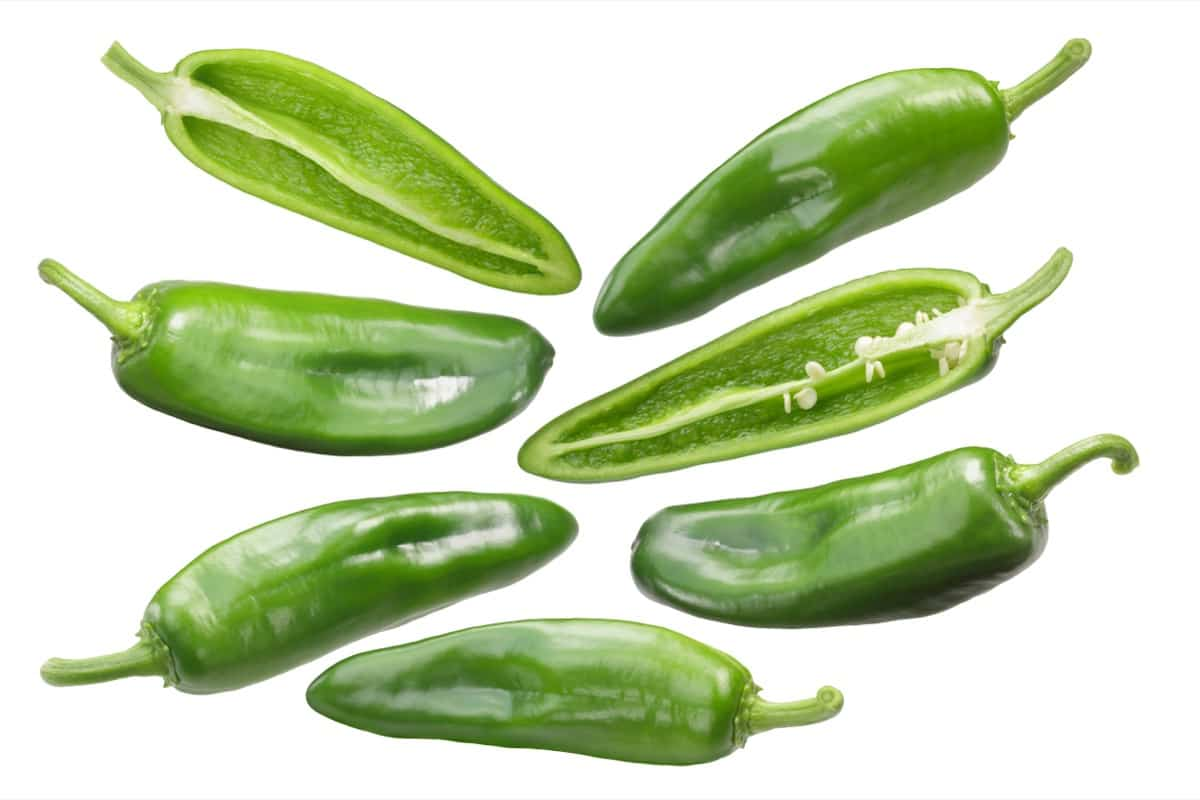
When transplanting, handle the seedling gently by its leaves rather than its stem, as this can cause damage. Dig a hole big enough for the root ball and plant it deep enough to expose only half of the stem above ground level. Water thoroughly after planting, but be careful not to overwater, as this can lead to the rotting of roots. Keep an eye on your transplanted Anaheim peppers for signs of stress, such as wilting or yellowing leaves.
Container Size Required for Growing Anaheim Peppers
Regarding growing Anaheim peppers, container gardening is a great option for those with limited outdoor space. However, choosing the right container size ensures your plants grow healthy and yield enough. It’s important to note that larger containers will also work well for this type of pepper plant, especially if you want to promote more fruit production. A 10-gallon or bigger pot would be suitable if you have ample space in your garden or balcony.
When using containers for planting Anaheim peppers, it’s essential to ensure they have proper drainage holes at the bottom. Excess water can easily accumulate in these pots leading to root rot which may cause permanent damage to your plants. Consider adding perlite or sand into the potting mix to control soil moisture levels in these containers. This ensures good drainage while keeping adequate moisture retention within the soil without causing any waterlogging issues.
Anaheim Pepper Plant Care
Climate Suitable for Growing Anaheim Peppers
Anaheim peppers are known for their mild and slightly sweet flavor, making them a favorite among gardeners who love to grow their vegetables. Anaheim peppers thrive in warm climates where temperatures range from 21 to 26 °C during the day and 15 to 21°C at night. They also require plenty of sunlight, ideally six to eight hours daily.
Growing Anaheim peppers from seed outdoors might be challenging if you live in an area with cooler temperatures or frequent rainfall. To ensure that your Anaheim pepper plants receive optimal growing conditions, consider using a greenhouse or starting them indoors under grow lights until they reach maturity. This will provide consistent warmth and light that can help stimulate growth even in colder climates.
Water Requirement for Growing Anaheim Peppers
When growing Anaheim peppers from seed, it’s essential to ensure that you provide adequate water for your plants. It would be best to keep the soil moist but not waterlogged at all times. Overwatering can lead to root rot and other fungal problems, ultimately harming or killing your plants. Anaheim pepper seeds require consistent moisture in their early stages of growth.
In case you missed it: How to Grow Tabasco Peppers from Seeds: At Home, In Pots, Raised Beds, Terraces, and Backyard
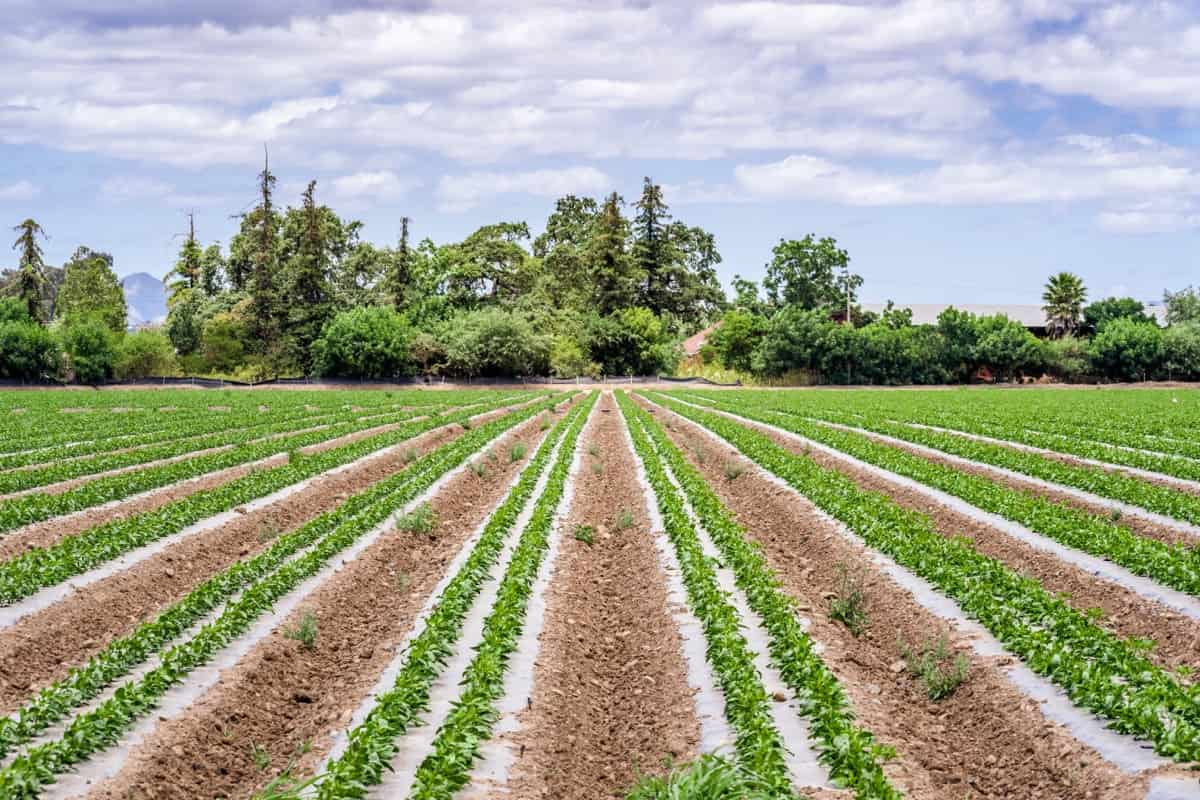
When transplanting your seedlings into larger containers or outdoor beds, it’s important to gradually increase your watering frequency while paying attention to weather patterns such as rainfall amounts and humidity levels to not under-water or over-water them. Keeping an eye on your plants’ moisture requirements is crucial when growing Anaheim Peppers from seed. Regularly checking soil conditions, observing changes in leaf texture color(wilting), and being mindful of temperature fluctuations will help keep these delicious veggies thriving.
Soil Requirement for Growing Anaheim Peppers
The soil requirement for growing Anaheim peppers from seed is crucial to ensure a healthy and fruitful harvest. These heat-loving plants thrive in well-draining, nutrient-rich, loose, aerated soils. When preparing your soil, it’s essential to incorporate organic matter such as compost or aged manure to boost fertility. Aim for a pH level of 6.0-7.0, which is slightly acidic to neutral, as alkaline soils can lead to stunted growth and poor fruiting.
It’s also important to ensure good drainage by adding perlite or coarse sand if planting in heavy clay soils. This will prevent waterlogging issues and promote root development. Remember not to over-fertilize your pepper plants at any point during their growth cycle, as this can lead to excessive leafy growth instead of focusing on fruit production. By providing the right soil conditions for your Anaheim pepper plants from seedling stages onwards, you’ll be rewarded with bountiful harvests of deliciously sweet and mildly spicy peppers throughout the season.
Fertilizer Requirement for Growing Anaheim Peppers
Fertilizer is an essential requirement for growing Anaheim peppers from seed. Avoid using too much fertilizer. To ensure your pepper plants receive adequate nutrients, use a balanced fertilizer with equal amounts of nitrogen, phosphorus, and potassium (N-P-K ratio) once every two weeks during the growing season. Consider using organic fertilizers like compost or worm castings instead of synthetic ones, as they release nutrients slowly over time and improve soil health.
In case you missed it: How to Grow Serrano Peppers from Seed: A Step-by-Step Planting Guide for Beginners
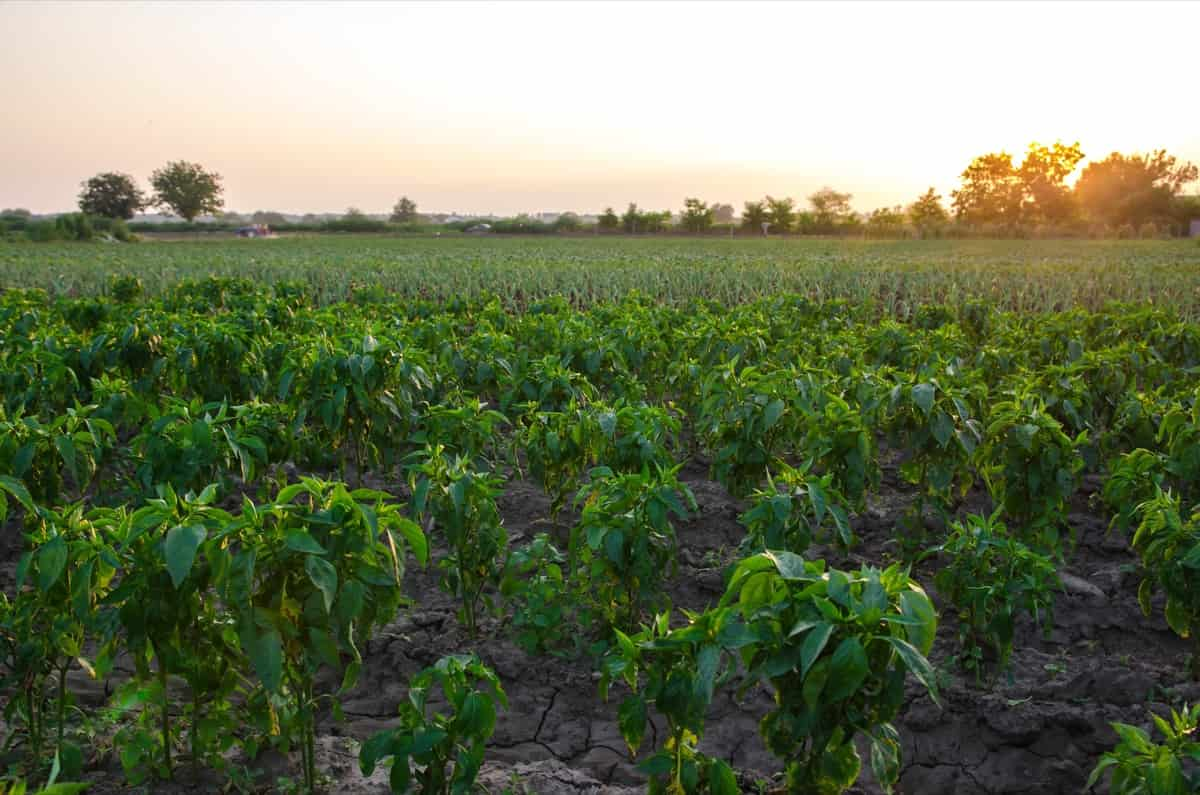
Another important factor to consider when fertilizing Anaheim peppers is the pH level. These plants grow best in slightly acidic soil with a 6.0-7.0. Test your soil regularly and adjust the pH using lime or sulfur. Always follow manufacturer instructions on dosage and application methods when using fertilizers to prevent burning your plant’s roots or causing other damage that may stunt their growth or reduce yield potential.
Pruning Anaheim Peppers Plant
Pruning is an important aspect of growing healthy Anaheim pepper plants from seeds. Pruning helps to remove diseased or dead leaves and branches, which promotes healthier growth in the remaining parts of the plant. It also helps to improve air circulation around the plant, which reduces the risk of fungal diseases. When pruning your Anaheim pepper plants, it’s important to use clean and sharp garden scissors or shears. This prevents tearing or damaging the stem and leaves while cutting them.
You should begin pruning when your Anaheim pepper plant reaches a height of about 6-8 inches. Use scissors to remove any yellowing or damaged leaves at the bottom of the stem to prune your Anaheim pepper plants effectively. Then move up towards the top part of your plant and remove any weak-looking shoots struggling for light. You can continue pinching off new shoots as they grow to limit business in favor of larger fruits with higher yields.
Anaheim Pepper Plant Care in Winter
Regarding Anaheim pepper plant care in winter, there are a few important things to remember. First of all, it is essential to protect your plants from frost and freezing temperatures. To do this, you can cover them with blankets or tarps overnight. Reducing watering during winter is also crucial, as the soil will not dry out quickly due to colder temperatures.
Another aspect of caring for your plants during the winter months is pruning. Removing any dead or diseased branches before they can spread further damage throughout the plant is best. Providing adequate light is critical for indoor-grown peppers during the shorter winter days. Consider using grow lights if necessary and ensure you’re positioning them appropriately from your plants.
Pests and Diseases of Anaheim Peppers and Their Control
Anaheim peppers are typically resistant to pests but can still fall victim to various bugs that can damage or kill the plants. One such pest is aphids, tiny inplants’hat feed on the sap of plant stems and leaves. They can stunt growth and deform plants if left unchecked. A natural way to control these pesky critters is by introducing ladybugs into your garden as they feed on aphids.
In case you missed it: How to Grow Habanero Peppers from Seed: A Step-by-Step Planting Guide for Beginners
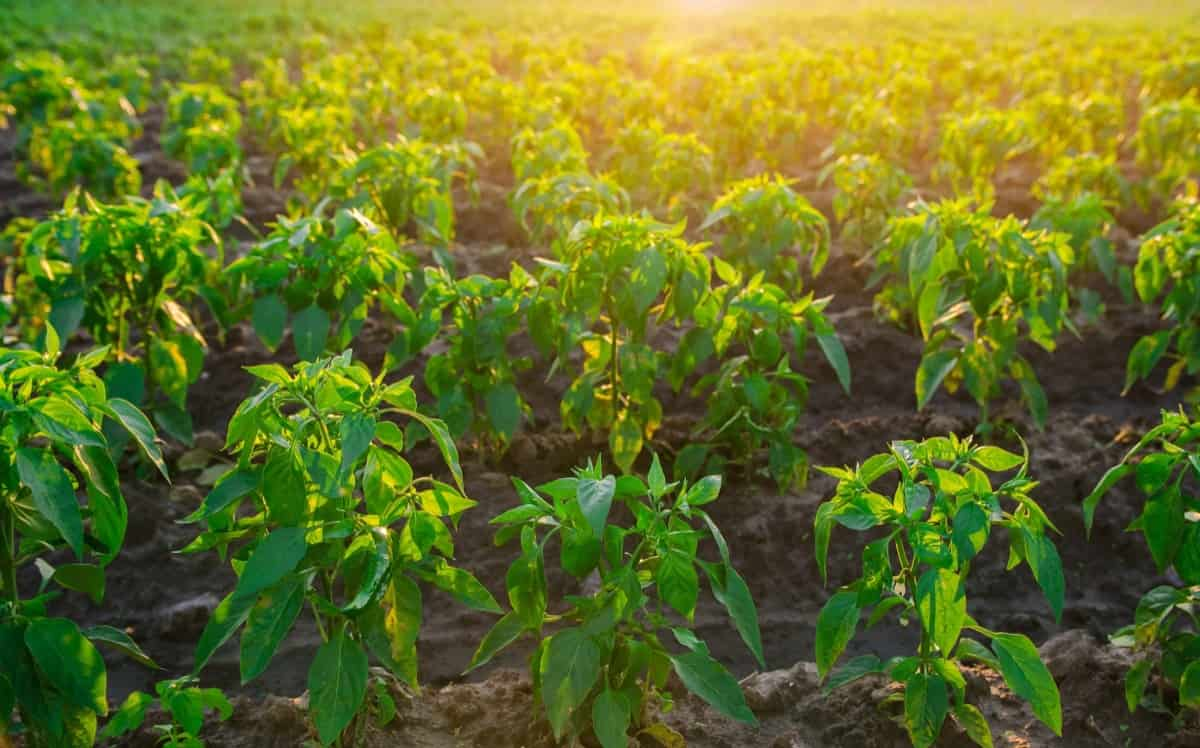
Another common pest for Anaheim peppers is spider mites, small arachnids that suck the juices out of pepper plants’ leaves. These pests thrive in hot, dry conditions, so regular watering and misting your plants can help prevent infestations. Slugs and snails love chewing through tender new growth on Anaheim pepper plants, leaving holes in the leaves that will cause stunted growth if not taken care of quickly enough.
Beer traps or copper tape placed around pots can effectively control slugs and snails without using chemicals harmful to humans. Regular monitoring and early detection measures (such as checking under leaves) are key in monitoring all types of pests affecting your Anaheim Pepper Plants. Diseases can devastate Anaheim pepper plants, causing stunted growth and reduced yields. One common disease is bacterial leaf spot, which causes small brown spots on the leaves that eventually turn black and drop off.
To control this disease, avoid overhead watering, remove infected plant material promptly, and use copper-based fungicides. Another common disease is powdery mildew, a fungal infection that appears as white or gray powder-like patches on the leaves. This disease thrives in humid conditions with poor air circulation.
To prevent powdery mildew from infecting your Anaheim pepper plants, keep them well-spaced apart when planting and provide good airflow around the plants. Fusarium wilt is another serious disease that affects Anaheim peppers by discoloring the roots and stems of affected plants. The best way to control this fungus is throughit’sp rotation (avoid planting peppers in the same location for at least three years) and using pathogen-free seedlings.
Harvesting Anaheim Peppers
Harvesting Anaheim Peppers is the most exciting part of growing them. Once your peppers have matured, they will be ready to pick in approximately 75-80 days after planting. The mature Anaheim pepper is usually six to eight inches long and has a shiny green color. When harvesting your peppers, it’s important not to pull or yank on the fruit as this may cause damage to the plant or leave behind broken stems that can attract pests or diseases.
Instead, use a sharp pair of scissors or pruning shears and carefully snip off each pepper at its base. If you notice any discolored or soft spots on your Anaheim peppers while harvesting, discard those fruits immediately, as they are likely overripe and past their prime for consumption.
In case you missed it: How to Grow Shishito Peppers from Seed: A Step-By-Step Planting Guide for Beginners
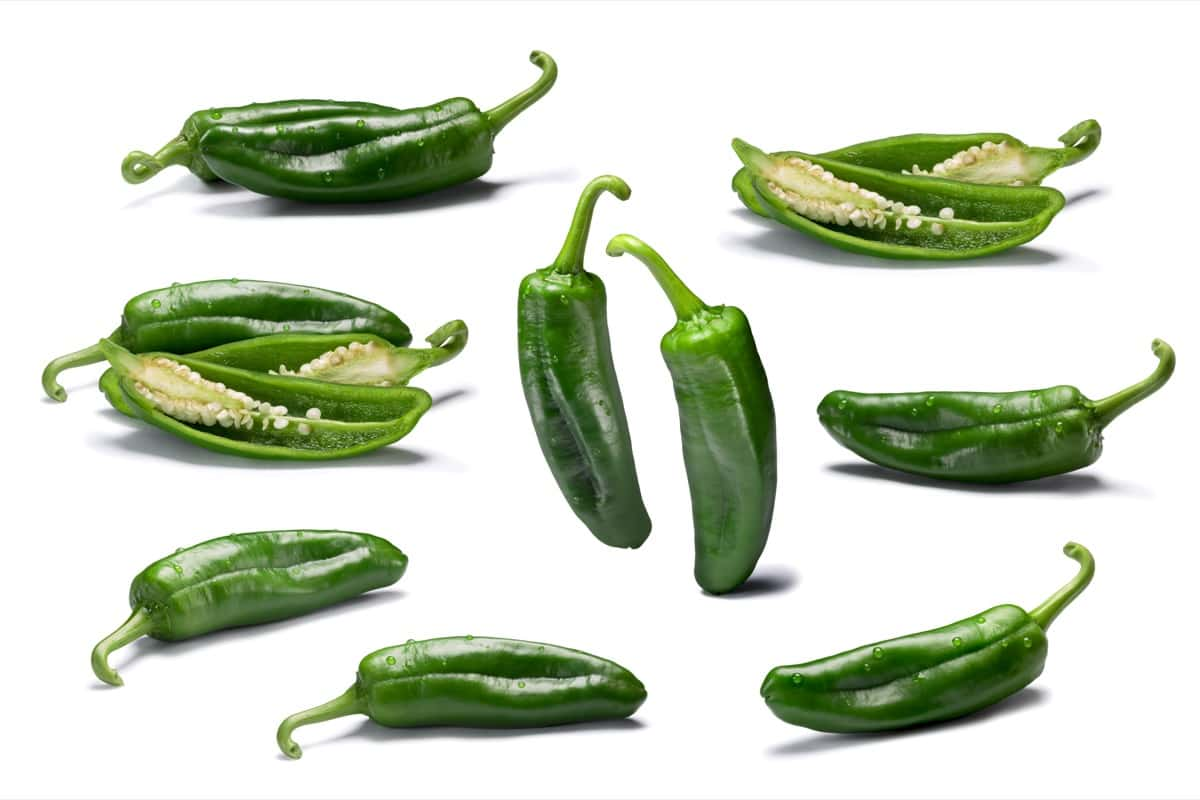
Conclusion
Growing Anaheim peppers from seed can be a rewarding and fulfilling experience for any gardener. Growing Anaheim peppers from seed are easy and rewarding as they produce abundant crops throughout the growing season. Remember to start with high-quality seeds from reputable sources, plant them appropriately in well-prepared soil, and provide your plants with optimal growing conditions. Regular watering, fertilizing, and pruning will help ensure healthy growth and fruit production. You can enjoy these delicious peppers in summer with the right conditions, care, and patience.
- Cabbage Seed Germination and Selection
- Broccoli Seed Germination and Selection
- Asparagus Seed Germination and Variety Selection
- Seasonal Flower Gardening: Best Practices for Spring, Summer, Fall, and Winter
- How to Grow Hibiscus from Flower
- Plantation Ideas for Home Decoration: A Beginners Guide
- Flower Garden Designs and Layouts for Beginners
- Planting and Spacing Techniques in Papaya: A Beginner’s Guide
- Growing Gold: Essential Techniques for Planting Pineapples
- How to Make Kalanchoe Plant Bushy: Home Remedies and Solutions
- 11 Reasons Why Your Gardenia is Not Blooming: Home Remedies and Solutions
- Eco Elegance: The Guide to Designing a Drought-Tolerant Landscape
- Gardening on a Slope: Strategies for Hillside Landscaping
- Nourish and Flourish: Top Organic Mulches for Thriving House Plants
- Everything You Want to Know about Indian Mogra Flower: Discover Uses and Growing
- Green Thumb Success: Expert Tips for Cultivating Greenhouse Pumpkins All Year Round
- Maximize Growth & Flavor: The Ultimate Guide to Companion Planting in Herb Gardens
- How to Control Rhododendron Problems Naturally: Home Remedies and Organic Ways to Fix Them
- Natural Magic: The Remarkable Benefits of Cinnamon for Plants
- Best Steps to Revive Dying Tulip with Natural and Organic Treatment
- 10 Reasons Why Your Angel Trumpet is Not Blooming: Remedies and Treatment
- How to Fix Periwinkle Leaf and Flower-Related Problems: Natural Remedies and Solutions
- How to Fix Zinnias Leaf and Flower Problems: Discover Natural and Home Remedies
- Organic Steps to Induce Lemon Tree Flowers: A Comprehensive Guide
- Bloom Booster: Crafting the Perfect Homemade Bougainvillea Fertilizer
- Optimizing Growth: A Guide to Applying NPK Fertilizer for Potted Plants
- 10 Best Homemade Fertilizers for Rubber Plant: DIY Recipes and Application Method
- How to Boost Female Pumpkin Flowers: Effective Steps for More Flowers and High Yields
- Transform Your Indoor Garden: Top Benefits of Pink Salt for Houseplants
- 10 Best Homemade Fertilizers for Peacock Plants (Calathea): Easy DIY Guide
- Unlock Blooms: 9 Reasons Why Your Potted Chrysanthemum is Not Blooming
- 8 Reasons Why Your Potted Hibiscus is Not Blooming: Fix it with Simple Solutions
- Unlock Blooms: 9 Key Reasons Your Potted Frangipani Won’t Flower
- 10 Reasons Why Is My Ice Plant Not Blooming: Remedies and Treatment
- 10 Reasons Why My Potted Hydrangea Not Blooming: Treatment and Remedies
- 10 Reasons Why is My Wisteria Not Blooming: Remedies and Treatment